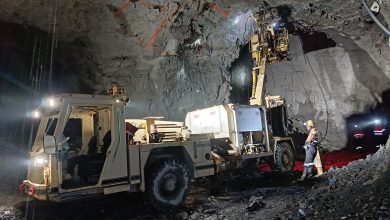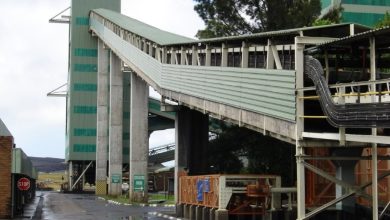
Operational Health and Safety Risks in Mining Operations
From Tickbox Exercise to Safety Culture
As they chase high revenue numbers, mining companies risk dropping the ball on compliance obligations like ESG reporting and health and safety regulations. This doesn’t always end well – it can result in costly breaches that negate anticipated gains.
On the subject of occupational health and safety operational risks, we spoke to Sian Thurtell, Chief Operating Officer at KBC Health & Safety, about common problem areas and how to mitigate them.
MBA: As mining companies ramp up production, what are common occupational health and safety operational risks likely to emerge?
ST: In a high-pressure environment where production is the primary focus, operational risks often emerge. These risks are typically driven by increased pace, stretched resources, and a shift in focus from safety to productivity. Common risks include:
- Fatigue from longer shifts, overtime, or insufficient rest, reducing attention and increasing the likelihood of incidents or accidents.
- Skills gaps due to rapid onboarding of contract workers without adequate training, resulting in rushed, unprepared teams being sent to site.
- Increased machinery use, leading to higher chances of mechanical failure.
- Safety shortcuts taken under production pressure, exposing workers to hazardous conditions.
- Lack of verification of competence (VOC) before work begins.
MBA: What gaps have you identified in how mining companies approach the mitigation of operational risks?
ST: In my experience, many mining companies struggle with the practical implementation of operational risk mitigation. While they often have all the right protocols, underpinned by legislation, executing these protocols on the ground remains a challenge.
One major gap is the non-integrated approach to onboarding contractors. We frequently see inconsistent onboarding processes, duplication of effort, and unnecessary downtime. Often, no system is in place to properly track and monitor compliance or training records for workers on site. This creates significant risk exposures, as there may be no real or accurate verification of qualifications or training documentation for site workers.
Safety is often viewed as a compliance checkbox, not a strategic priority. If safety were treated as a primary operational goal, mining houses would take a more proactive stance. Incident data is collected daily, weekly, and monthly, but rarely analysed for trends or early warning signs. These signs, if spotted, could allow for swift preventative action.
MBA: What specific steps must be undertaken as part of a root cause analysis to better inform the mitigation approach?
ST: At KBC, our approach to Root Cause Analysis goes beyond identifying what went wrong. We focus on understanding why it happened, to ensure it doesn’t happen again.
- Define the incident and detail the problem.
- Gather and verify data – interviews, documents, photos, and system logs.
- Reconstruct the timeline of events.
- Evaluate contributing factors, including human behaviour, equipment, processes, procedures, environmental conditions, and organisational systems.
- Determine the root cause, which is often due to:
- Inadequate risk assessments
- Training gaps or competence failures
- Weak supervision or unclear procedures
- Poor communication or handovers
- Lack of safety culture
- Develop a corrective action roadmap.
- Implement ongoing monitoring and review
MBA: Mining operations are complex, and so are their safety risks. What critical strategies can be adopted as part of an integrated approach?
ST: At KBC, we work closely with clients to implement a fully integrated onboarding solution, which is especially crucial when dealing with contractors. We collaborate with executive teams to align the entire organisation with its operational risk management objectives.
Safety must be embedded as a core organisational value — it should be a way of life, not just a compliance exercise.
An integrated onboarding model ensures that both contractors and permanent staff undergo consistent, standardised training programmes and follow the same safety protocols. The implementation of practical, high-impact training across all levels strengthens knowledge retention and fosters a safety-first culture.
MBA: What opportunities has AI opened — if any — that can support implementation and review of this integrated approach?
ST: AI has opened up several possibilities to customise the learning experience. We are currently exploring tools that enhance our client solutions.
One exciting area is how AI can deliver personalised training based on a worker’s role, performance history, knowledge gaps, and risk exposure. There are also adaptive e-learning tools that adjust content and difficulty in real time, boosting engagement and knowledge retention.
We are also exploring the use of AI in culture surveys, helping us deliver faster insights and recommendations. AI can analyse responses, feedback, and communication data to assess safety sentiment, leadership effectiveness, and engagement levels. It can then help generate a comprehensive action plan based on the results.
KBC Health & Safety is a health and safety consultancy that provides solutions across industries in South Africa. Some of its prominent clients are in the mining sector mining.






